Jnanpeeth awardee Dr Bhalchandra Nemade’s Marathi works get a Gujarati translation, making his books accessible to a wider readership
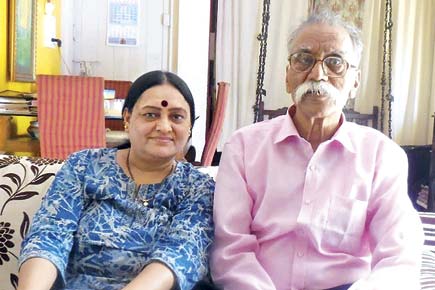
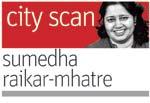 Dr Urvashi Pandya, the Gujarati translator of the three works of Jnanpeeth awardee Dr Bhalchandra Nemade, feels the original Marathi narratives inspire a pan-Indian search for cultural roots.
Dr Urvashi Pandya, the Gujarati translator of the three works of Jnanpeeth awardee Dr Bhalchandra Nemade, feels the original Marathi narratives inspire a pan-Indian search for cultural roots.
The protagonist of Dr Bhalchandra Nemade’s first novel Kosala (1963) speaks the Ahirani dialect, which enjoys currency in the northwestern part of Maharashtra (like Dhule and Jalgaon) as well as in the bordering cities of the state of Gujarat.
ADVERTISEMENT
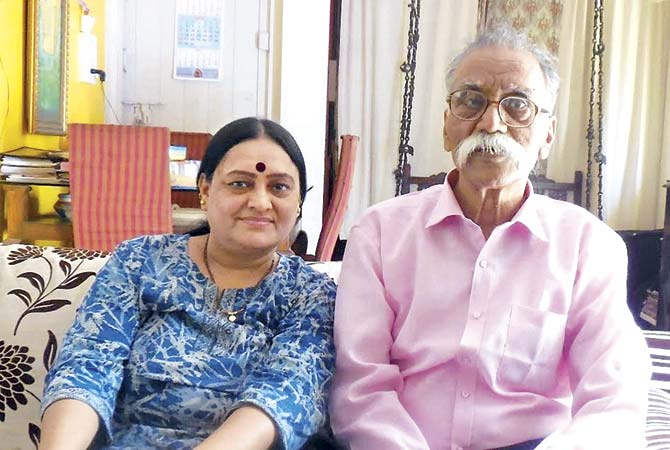
Dr Urvashi Pandya and B Nemade, the artiste and the translator. They approach translation as a creative work
In fact Kosala’s charm comes from the funny mix of Hindi, Marathi and Gujarati words that Ahirani constitutes, quite often borrowing more of colloquial Gujarati than Marathi. No wonder Kosala, which means a cocoon, found a reflection in several Indian languages like Kannada, Assamese, Bengali and of course Gujarati, thereby underscoring the spoken dialect as a legitimate worldview.
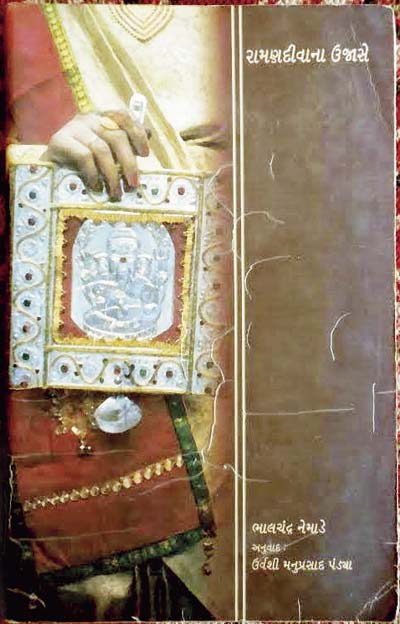
The Gujarati translation of the works
It is interesting that as Kosala crosses its 52nd year of literary existence and its creator receives the Jnanpeeth literary award, another epoch-making novel of Dr Nemade, Bidhar, is being rendered into Gujarati. Bidhar (1967), part of a quartet series, explores the theme of the Marathi youth’s search for indigenous roots while being caught in the throes of superficial modernization.
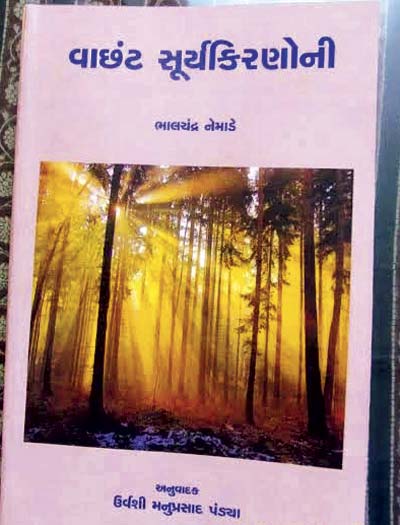
Dekhani in Gujarati
Like Kosala’s hero, Bidhar’s Changdev Patil also speaks in a colloquial idiom about his inability to reconcile the rural and urban worlds.
Patil’s story will soon be released in Gujarati by the Ahmedabad-based Parshwa Publication, which is also soon to publish Dr Nemade’s collection of romantic poems titled Dekhani. Both the translations have been done by Dr Urvashi Pandya, the former head of the Gujarati department of the University of Mumbai.
Mission
Interestingly, Dr Pandya has been a colleague of Dr Nemade when he held the Gurudev Tagore Chair of Comparative Literature. Her translations started in the mid-90s and have spanned over two decades.
The University’s Bhasha Bhavan has provided the backdrop for the consistent exchanges between the two colleagues when they deliberated over every translated term. When Dr Nemade retired and no longer stayed on the campus, the duo held their day-long exchanges in his suburban apartment. And that is not the end of the story.
Dr Pandya intends to take on more of Dr Nemade’s translations, which includes his expansive novel ‘Hindu: Jagnyatil Samruddha Adgal’ (2013) which translates as ‘Hindu: A wealth of clutter in the path of living.’ It is comforting to see that Mumbai, the city of distances and minute-to-minute appointments, nurtures a writer-translator pair which pursues translations as a creative writing assignment.
Dr Pandya has a mission behind the translation: To introduce the Gujarati reader to a septuagenarian genius writer who has passionately advocated the preservation of indigenous native tongues ever since he wrote his first novel at the age of 24. “I always felt Kosala and Bidhar belong to a pan-Indian milieu. These are stories of Indians who have a village firmly rooted in their mind space.
These people feel lost in artificial urban worlds which do not relate to their cultural past. They make cultural adjustments and Dr Nemade captures their suffocation, the uprooting that comes with the loss of the mother tongue.
Such narratives are not restricted to any particular Marathi culture, but they speak of a general loss of heritage,” Dr Pandya (the academician currently researching on the contribution of female saints on Medieval Gujarati Literature) puts it. Dr Pandya feels strongly in favour of Dr Nemade’s insistence on the mother tongue.
In fact, one of the reasons for choosing to translate Melody (2001), Bidhar and Dekhani is the pre-eminence she wants to place on language as a means to livelihood. “If you lose your language, you lose everything.
You cannot express your innermost thoughts to the wider world as your means of expression is not your own, but a borrowed foreign medium. I feel Dr Nemade’s works will bring this truth alive for the Gujarati people who, like most Indians, suffer because of the shrinking base of their linguistic heritage.”
Sumedha Raikar-Mhatre is a Mumbai-based culture chronicler
 Subscribe today by clicking the link and stay updated with the latest news!" Click here!
Subscribe today by clicking the link and stay updated with the latest news!" Click here!







